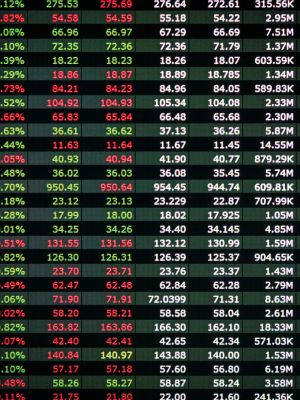Valuation for private and publicly listed companies are approached differently, largely due to the nature of ownership, market dynamics and the transparency requirements imposed on publicly traded entities.
Publicly listed companies are traded on stock exchanges and their valuations are highly influenced by market conditions and market sentiment. Investors, traders and analysts base these valuations on the company’s earnings, growth potential, sector performance and overall sentiment. Valuations of public companies are relatively transparent, as they are required to regularly disclose via continuous disclosure regimes including financial statements, operational data and material events. The most common valuation metric for public companies is the equity market capitalization (share price multiplied by the number of issued shares), which can fluctuate daily with market conditions.
Private companies, on the other hand, are not subject to the same disclosure requirements and their share price is not quoted on a stock exchange and so their share price and valuations are much more opaque. The absence of a public market valuation and a quoted share price means that valuations are not constrained by market perceptions of value. Instead, valuations are based on more fundamental financial and strategic analysis, including growth projections, the company’s profitability and industry comparables, and are often negotiated with investors during funding rounds.
In many cases, private companies can achieve higher valuations than their public counterparts due to less intense public scrutiny. This is even though these valuations are often less transparent, more volatile and harder to justify with traditional financial metrics.

Future Growth Projections: Private companies, especially those in technology or innovative sectors, often attract venture capital funding with aggressive growth projections. These companies are not under pressure to deliver short-term profits and investors may be willing to pay a premium for their potential future value.
Control and Negotiation: Without the visibility of a daily traded share price, private companies can achieve attractive valuations through direct negotiations with investors and potential acquirors. These negotiations may yield higher valuations because investors are investing in long-term potential rather than immediate returns and are not constrained by the public perception of value that attaches to a quoted share price.
Scarcity and Exclusivity: Private companies can often attract higher valuations because investors believe they are getting in on an exclusive opportunity that is not available in the public markets. This sense of scarcity can inflate the perceived value.
However, public companies can also achieve significant valuations, often driven by scale, liquidity, access to broader pools of capital or market exuberance. However, because public companies tend to have higher scrutiny from analysts, brokers and investment professionals, their valuations can be held in check, especially if the company fails to meet market expectations.

The difference between these types of valuations also ties back to liquidity. Investors in public companies have more transparent price discovery and the advantage of liquidity, ie they can sell shares quickly, which can add to valuation. Typically private company valuations are more opaque or speculative as investors often need to wait for a corporate transaction such as a capital raising, merger, acquisition, or IPO to crystalise value and realize returns.
Of course, now with the PrimaryMarkets Platform, private companies are able to offer liquidity to their investors thereby increasing price discovery and a potential premium to the share price.
There is also a disconnect between public and private company valuations and how this influences their ability to buy assets and grow, which stems from several key structural differences related to their ownership, access to capital, and market expectations.
Access to Capital and Liquidity
Public companies generally have easier access to capital due to their ability to issue shares on stock exchanges. This liquidity provides them with a significant advantage to raise funds quickly through follow-on offerings of equity or convertible debt instruments. This access to public markets allows them to quickly raise substantial capital, which can be used for acquiring assets, investing in new projects, or expanding into new markets. Moreover, public companies can use their shares as currency, offering stock as part of an acquisition deal. This flexibility gives them an advantage in mergers and acquisitions (M&A), where the target company may prefer equity in a publicly traded company for its liquidity and perceived upside.
Private companies, by contrast, face more challenges in raising capital. They rely on sources such as professional investors, private equity, venture capital, or retained earnings to fund acquisitions and growth. While private investors may be willing to provide large sums of capital, the process is typically slower and more limited in scale compared to the public markets. Additionally, the capital available to private companies is often tied to their stage of growth, meaning they may struggle to raise the same amounts as public companies without significant equity dilution or negotiating power.
Valuation Discrepancies and Impact on Asset Acquisition
Public company valuations are generally more reflective of current market sentiment and external factors, such as sector trends and economic conditions. This market-driven valuation can work both for and against a company. In boom periods, when valuations are high, public companies can use their inflated share prices to acquire assets more aggressively, often paying with shares rather than cash. However, in periods of market volatility or downturns, valuations can dip quickly and significantly, making it harder for public companies to justify acquisitions or spend large sums on expansion.
Private companies, on the other hand, often enjoy higher perceived valuations in their growth phase due to future potential rather than current performance. This can be both a strength and a weakness. While private companies can attract premium valuations during funding rounds, their actual liquidity is often limited, making it harder to translate that valuation into real purchasing power for asset acquisition. Furthermore, because their valuations are typically set through negotiation rather than transparent market pricing, there may be a gap between perceived value and actual financial capability. Private companies, particularly those still scaling, may not have the consistent cash flow to finance large acquisitions without external financing.

Growth Strategy and Market Pressure
Public companies are under constant pressure via the ASX continuous disclose regime to deliver quarterly results and meet the expectations of investors and analysts. This pressure can lead to a more conservative approach to growth and acquisitions, as public companies often prioritize predictable earnings growth, dividends and share buybacks to satisfy shareholders. Large-scale acquisitions, especially those that not immediately earnings accretive, are risky or long-term in nature, may be met with skepticism by investors, limiting the company’s ability to pursue aggressive growth strategies. At times, this can create a disconnect between the company’s valuation and its actual ability to grow.
Private companies have more flexibility in their growth strategies because they are not beholden to the short-term demands of the stock market. Without the need to deliver quarterly earnings reports, private companies can take a more long-term view on acquisitions and growth initiatives, even if these moves might not pay off immediately. However, this freedom comes with limitations: without easy access to capital markets, private companies are often more constrained in how much they can spend on growth. Additionally, the need to appease private investors, such as venture capitalists, may still impose restrictions on a company’s strategic direction.
M&A Activity and Competitive Positioning
Public companies, particularly large ones, often have a stronger position in the competitive landscape. Their larger market caps, cash reserves and brand equity allow them to be more aggressive in acquiring strategic assets or competitors. Public companies are also better positioned to engage in cross-border acquisitions, taking advantage of economies of scale and diversification. Because their valuations are constantly visible and scrutinized, they can better negotiate deals where the target company sees value in being part of a more visible, publicly traded firm.
Private companies, even with high valuations, often face challenges in competing with public companies for high-value assets. They may be outbid in acquisition deals or unable to offer the same liquidity options (such as publicly traded shares) that would attract target companies. In some cases, private companies with inflated valuations may also face skepticism from potential acquisition targets about their ability to deliver on promises of growth or integration.
The disconnect between public and private companies in terms of valuation and their ability to grow or acquire assets largely comes down to their access to capital and the nature of their financial structures. Public companies, with their market-driven valuations and liquidity, have greater flexibility to pursue aggressive acquisitions and growth strategies but are often constrained by short-term market pressures. Private companies, while potentially achieving higher valuations through growth potential, face greater limitations in terms of capital access and liquidity, which can restrict their ability to convert these valuations into actual growth or asset acquisition. Ultimately, both types of companies face distinct opportunities and challenges based on their ownership structures, which directly impact their ability to buy assets and fuel growth.
PrimaryMarkets is a flexible and evolving Platform that responds in real time to the ever-changing investment environment. In doing so, it provides sophisticated investors with access to companies that are shaping the future in a wide variety of industries and sectors. We provide access to opportunities previously only accessible to institutional investors.
PrimaryMarkets exemplifies how innovation can transform the way we invest, trade and raise capital by breaking down traditional barriers, providing liquidity solutions and promoting transparency.
As the Platform continues to grow and evolve, it promises to unlock even more opportunities for investors and the companies shaping the future of economies.

